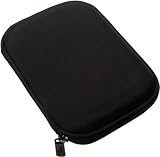It’s become fashionable to play a song with one particular tuning and then either (a) use another guitar with a different tuning or (b) re tune your guitar to play the next song. If you know how to use the capo properly you won’t have to bother with that. You will be able to play all your songs using standard tuning.
So why don’t more guitarist use a capo and stop fiddling around with different tunings? After all you don’t walk into a music store and ask for a piano in drop “D” do you?
The truth of the matter is, most guitarists / teachers are not aware of the many applications of a capo. Indeed, a large number of guitar teachers frown upon using a capo and look at it as a way of “cheating” – a “shortcut” way of playing without learning the guitar “properly”.
After over thirty years of guitar playing, recording, arranging and producing … nothing could be further from the truth!
I have to tell you that these comments about “cheating” are mostly born of ignorance.
All professional studio guitarists understand the importance of knowing how to use a capo (many guitar sounds we hear on a daily basis on the radio use a capo). A good working knowledge of the capo will allow you to play most songs WITHOUT having to alter the tuning of the guitar.
Now, what are the benefits of using a capo …
Knowing the notes of a Chromatic scale is the key to understanding how to use a capo.
The chromatic scale is a scale whereby you start on any note and simply play twelve consecutive notes in a linear fashion on a single string until you reach the note of the same letter name you started on.
Here is an “E” chromatic scale, you could apply this scale to either the first or sixth string of the guitar.
E chromatic scale: E, F, F#/Gb, G, G#/Ab, A, A#/Bb, B, C, C#/Db, D, D#/Eb, E
Now a “G” chromatic scale: G, G#/Ab, A, A#/Bb, B, C, C#/Db, D, D#/Eb, E, F, F#/Gb, G
(a) Notice how both scales contain exactly the same notes simply starting from a different note.
(b) Remember there is no sharp or flat between the notes E & F or B & C.
Applying the concept of the chromatic scale to the capo.
Step 1: select any chord shape you like … I’ll use “D” major for our example
Step 2: using our chromatic scale pick a chord you don’t know or have difficulty playing … let’s say “F” major.
Step:3 using the chromatic scale count up the distance from the chord you like (D major) to the chord you want to play (F major), the distance is three.
D, D#/Eb, E, F.
D to D# or Eb is one.
Remember, there are two possible names for the one note D# can also be named Eb.
D#/Eb to E is two.
E to F is three.
This means that if we put our capo on the third fret (the distance between D and F) and played the “D” chord we would be automatically playing the chord of “F” using the exact same finger formation for both chords.
Of course it’s not practical to move your capo all around the guitar while you are playing a song, I’m simply using this as an example of how you can change any nasty chord shape you are having trouble playing into a chord shape you like.
Some more examples:
G chord shape with the capo on the 3rd fret produces a Bb chord.
D chord shape with the capo on the 1st fret produces a Eb chord
E chord shape with the capo on the 2nd fret produces a F# chord
G chord shape with the capo on the 4th fret produces a B chord
G chord shape with the capo on the 1st fret produces a Ab chord
Try working out the name of your favorite chord shape(s) when you place the capo on a particular fret … it will improve you knowledge of the guitar fretboard as will as give your music theory a good work out.





No comments:
Post a Comment